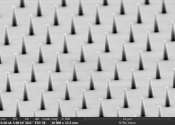Printing circuits on rare nanomagnets puts a new spin on computing
New research artificially creating a rare form of matter known as spin glass could spark a new paradigm in artificial intelligence by allowing algorithms to be directly printed as physical hardware. The unusual properties ...









